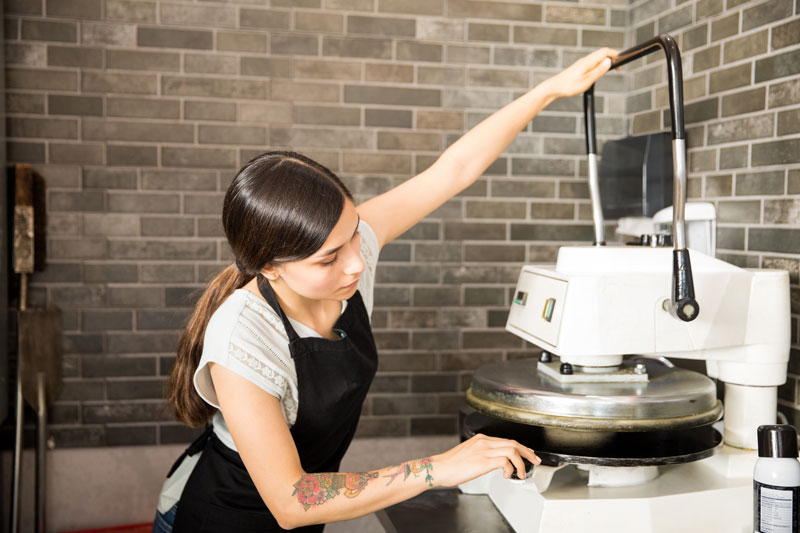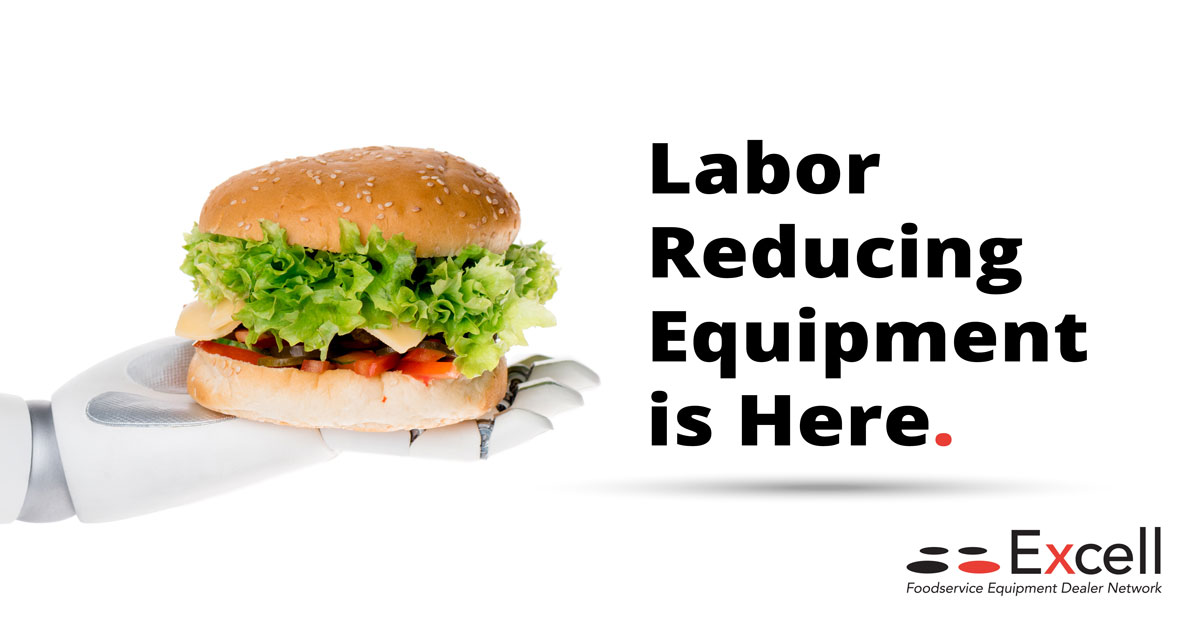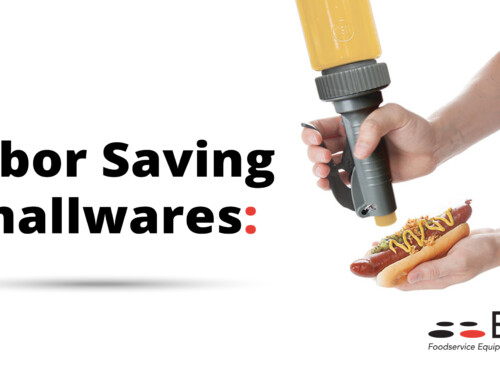Looking To Reduce Labor? Here’s Equipment Worth the Investment
Self-cleaning, programmable and intuitive equipment—or even a low-tech smallware—can help save labor, say foodservice consultants and operators.
Keeping labor costs in check remains one of the top concerns for foodservice operators today. Manufacturers have continued to respond to this perpetual need by bringing equipment to market that helps operators save labor.
In fact, labor-saving equipment might be more important now than ever in these pandemic times. Steve Starr, president of starrdesign in Charlotte, N.C., says, “Cash is super-tight now [for most operators], but once that loosens up just a little bit, I think labor-saving back of the house equipment is going to be the No. 1 priority, because COVID-19 is requiring so much front-of-house labor.”
Whether equipment saves training time or daily staffing hours, it all adds up to help the bottom line. To see what factors are driving labor-saving equipment now and into the future, we asked consultants and operators to weigh in.
Lean and Clean
“There’s so much more cleaning that has to be done in front of the house because of COVID,” says William H. Bender, founder and principal of W.H. Bender & Associates in San Jose, Calif., and vice president of SSA Inc. in Tampa, Fla. Operators are looking for and relying on equipment that is self-cleaning, easier to clean or low maintenance in the back-of-house to help offset that added labor in the front-of-house.
“Operators say, make it easy for me to take care of my equipment,” Bender says. “I have this fryer here, but it’s so hard to clean. Below, there’s all these tanks and gauges and wires, everything hanging out, and all the grease and fat is dripping down on the components.” So, equipment that manufacturers design to inherently reduce the need for frequent cleaning, or that is self-cleaning, such as fryers, ovens or hoods, is favorable.
“Where I am in California—and I know it’s the same in New York and other high-cost areas—labor is so expensive and the occupancy costs are so expensive,” Bender says. “Here in Silicon Valley, you have to start people out at a very high hourly rate just to attract someone, [so you want to] use their time for cooking and preparation as opposed to cleaning.”
Get With the Program
So-called smart equipment with automated and programmable features continues to be a major player in saving labor.
“If it’s programmable, we don’t have to have this gigantic culinary background, we can have someone push a button or an icon—press this button for chicken, fish, baking—which really kicks back into labor-saving because … we can train easier,” Bender says. “When you save time, you’re more efficient, you save labor.”
That’s especially helpful in this new foodservice experience. Automation and programmability to kitchen equipment makes it so much easier to cross-utilize people, Starr says.
Starr designed the kitchen at the fast-casual taco restaurant Hiya! Taco in Shorewood, Wis. There, employees cook all proteins in bulk in the combi oven, cool them with an automated blast chiller, store them, and then finish them individually to order on a flattop griddle.
The combi oven and blast chiller save on upfront training as well as daily labor, says Matt Roman Lopez, director of operations for Toro, Toro, Toro, the restaurant group that operates Hiya! Taco. “The recipes are programmed in there, and you just press a button. All of that checking on things, opening up the ovens, taking the temperature—that all goes away and you get this perfectly cooked product,” he says.
The equipment’s ease of use allows Roman Lopez to staff the restaurant with employees who multitask across traditional roles. “We don’t have prep cooks or line cooks or dishwashers. We have kitchen people,” he says. They can fit up to five employees during a rush, or in the case of a slow period or an unforeseen event preventing staff from coming to work—from sickness to a Wisconsin snowstorm—the whole operation could feasibly be run by just a manager, Roman Lopez says.
A Low-Tech Labor Win
Though technology tends to drive innovation in foodservice, equipment doesn’t have to be high-tech to move the needle on labor-savings.
“We used to spend so much time developing pizza makers,” says Jeff Miceli, cofounder and president of Colorado-based fast-casual chain Mici Handcrafted Italian. “Our managers were typically our best pizza makers, and they weren’t really … doing all those things that are so important to leading a team because they were just stuck on the ovens and making pizzas all night.”

The Mici team tried many different mechanical dough presses, rollers and sheeters; when nothing sufficed, Miceli made his own manual press in his garage and enlisted a local 3D printer to reproduce it. “The difference with this press is it’s very delicate on the dough,” Miceli says. “We sell a very high-end artisan pizza and if you smash the dough, you burst all the air out of it and it’s flat and doesn’t taste very good.”
The press not only saves labor by making the pizza-making process itself less time-consuming, but it’s also changed the way they staff the station entirely. “Now anybody in our restaurant can bounce over and help the pizza station, when before you had to have this grizzled veteran or manager doing it,” Miceli says.
There’s been no discernible difference in quality, he adds. When potential franchisees take a kitchen tour, Miceli has them prepare a pizza using the press while his brother, cofounder Michael Miceli, makes a hand-tossed pizza—then they do a taste test. “You have this complete rookie going against this 25-year veteran and you cannot tell the difference,” Miceli says.
On The Horizon
Looking into the future, operators are likely to continue to demand equipment that is intuitive to use above all else. “I always say, it needs to be like an iPhone. That’s what everyone is used to,” Roman Lopez says. “When you want to make a phone call, there’s a phone icon. When you want to check your email, there’s a mail icon. There’s not much going on that’s so complex. You want equipment that is basically, push this button here, put this steak in here, and it can cook it for you.”
Connectivity and consistency across different kinds of equipment also will gain momentum. One development Starr says he’s watching: a number of manufacturing conglomerates or groups launching an initiative to integrate their automated controls across all their brands. Picture the same controls on a conveyor oven as a self-filtering, auto-lifting fryer, he says. “And you can access the recipes for all the different things from any piece of equipment. I think that just allows for better labor-saving and better consistency across the industry. It’s kind of like learning Microsoft Word when you already know Excel. It’s the same user interface, so it’s a whole lot easier.”
A Look at the Labor Force
- 1.2M fewer 16- to 24-year-olds in the labor force by 2028
- 0.5% anticipated U.S. average annual labor force growth, 2018 to 2028
- 17.2M projected restaurant and foodservice jobs in 2030
- 6.1M additional adults 65 and older expected to be in the labor force by 2028
Source: “Restaurant Industry 2030” by the National Restaurant Association
Originally written by Lisa Arnett. Reprinted (and updated as needed) with permission of Foodservice Equipment Reports, FER Media LLC




